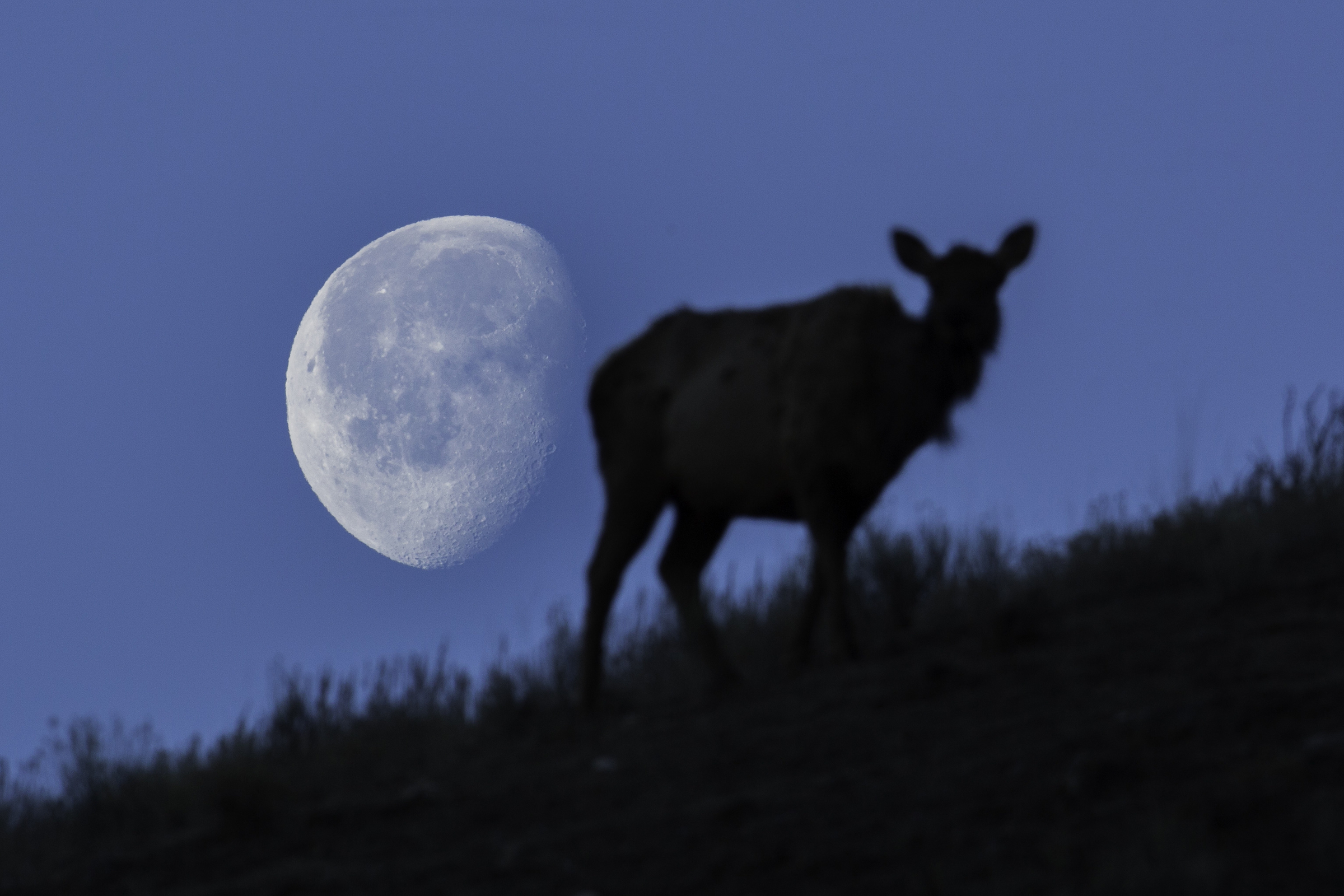How to watch the 'Independence Day' lunar eclipse

Bummed about Fourth of July fireworks being canceled in your area? Don't be: There will be an even bigger celestial treat for skygazers this weekend; a full moon and a partial penumbral eclipse will be visible this Saturday and Sunday (July 4-5).
The timing isn't a coincidence — lunar eclipses can only happen during a full moon. However, unlike the Great American Eclipse of 2017, this eclipse won't be total. Instead, only a faint shadow of Earth will fall on the moon.
The lunar show begins the evening of Independence Day and ends during the early morning hours of Sunday, July 5. Unlike the lunar eclipse that accompanied June's full "strawberry" moon, this eclipse will be visible in most of the U.S., including the lower 48 and Hawaii, but not Alaska.
Related: Glitzy photos of a supermoon
A partial penumbral eclipse happens when Earth is between the sun and a full moon. Eclipses begin when Earth's shadow falls on the moon, but in this case, the moon won't be passing through Earth's dark, inner shadow, known as the umbra. Instead, on July 4 the moon will go through Earth's outer, lighter shadow, known as the penumbra. (The video below shows a helpful visualization.)
Moreover, this eclipse will be "partial," because only part of the moon will dip into the penumbra. In effect, this weekend's partial penumbral eclipse will appear as if a mouse took a small, dim bite out of the northern edge of the full moon. This "bite" may be difficult to see with the naked eye, so moon gazers may need telescopes or binoculars to see the full effect, according to NASA.
The eclipse begins at 11:07 p.m. EDT on July 4 (3:07 a.m. UTC on July 5), according to timeanddate.com. The eclipse will be at its maximum — the point where the greatest percentage of the moon will be covered in the penumbra — at 12:29 a.m. EDT (4:29 a.m. UTC) on July 5. Then, 2 hours and 45 minutes after it began, the eclipse will end at 1:52 a.m. EDT (5:52 a.m. UTC).
Get the world’s most fascinating discoveries delivered straight to your inbox.
If you miss this lunar eclipse, be sure to catch the next one, which happens on Nov. 29-30, 2020, according to Space.com, a sister site of Live Science.
Meanwhile, photographers would be loons to miss the full moon shining this weekend. July's full moon is widely known as the buck moon, named because mid-summer is when male deer, called bucks, grow their new antlers. However, it's also known as the thunder moon, a nod to the summer's frequent thunderstorms, according to NASA.

The moon will reach peak fullness at 12:44 a.m. EDT on Sunday morning. But the moon will appear full for three days, from Friday evening (July 3) to Monday morning (July 6).
Other celestial sightings the night of July 4 will include the bright planet Jupiter and a fainter Saturn, both of which will appear in the east southeast, NASA noted. The "summer triangle," made up of the three bright stars Vega, Deneb and Altair, will appear toward the east.
Originally published on Live Science.

Laura is the managing editor at Live Science. She also runs the archaeology section and the Life's Little Mysteries series. Her work has appeared in The New York Times, Scholastic, Popular Science and Spectrum, a site on autism research. She has won multiple awards from the Society of Professional Journalists and the Washington Newspaper Publishers Association for her reporting at a weekly newspaper near Seattle. Laura holds a bachelor's degree in English literature and psychology from Washington University in St. Louis and a master's degree in science writing from NYU.


